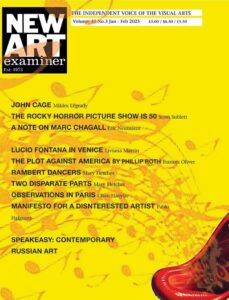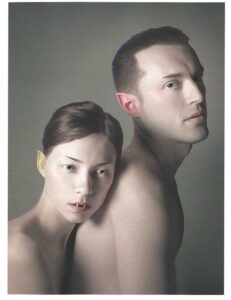Emblems of the King, Representing Power, Authority, and Dignity
By Rina Oh
Korea is known to have many dragons, each one serving a purpose. Of all the mystical dragons, the most popular is Yong, a benevolent hornless ocean dwelling creature who symbolized protection and hope, and protected humans, warding off evil spirits.
Several types of dragons in Korean folklore vary in form and symbolism. Though its origins lay in ancient Chinese culture, the dragon, commonly recognized as a symbol of power, influence, and wealth has become part of the Korean Royal Court that first emerged in the Buyeo period, the predecessor of Gorgouyeo and later, in the three kingdoms: Goryeo, Shilla, and Baekjae. Kings were adorned with the iconography of the dragon in court attire, furniture, and insignia along with personal possessions such as the famous Dragon Jar acquired by the Metropolitan Museum, New York. We see evidence in historic royal portraiture of the Joseon Dynasty. Royal portraits were painted with ink on paper, then transferred onto fine silk, with fine color pigment added in many layers in a process of transferring the ink on paper study onto silk called sangcho.
The ink on silk royal portrait of King Taejo owned by the Korean Cultural Heritage Administration is the only surviving full length portrait of a Korean king from the Joseon Dynasty with three remaining royal half-length portraits including a study for the portrait of King Sojong.
The royal court artists worked closely with the King, and his ministers. They were involved in the decision-making process, from the sitting position, to gestures and characteristics of the persona which were always depicted.
The royal portraits were commissioned, not privately but rather as an official state affair. The first portraits on record, emerge with several impressions of King Taejo, the first monarch of Goryeo (founded in 918 CE.).

The most notable portrait is a statue of the monarch. Through my research writing this article, I discovered Taejo’s second wife, Queen Janghwa of the Naju Oh clan is a distant relative of mine, as my ancestry traces back to her ancestors. My Korean birth certificate registered my surname under the Naju Oh Clan. My ancestry book traces my bloodline back to the origins of the 16 Oh clans in Korea.
The Kings of the later Joseon Dynasty wore bright silk dyed clothing, embroidered with intricate images of the dragon. Hanbok is the traditional indigenous garment of the Korean Peninsula, developed over a period of at least 600 years. Hanbok, the traditional garment worn, and popularized during the Joseon Dynasty had design elements meticulously curated to display and symbolize the social status of the persons wearing such clothing. In modern day Korea, hanbok styles of the Joseon Dynasty (1392- 1910) are still worn by men and women during special occasions.

Korean master artists had several names. An Gyeon (one of the most famous landscape painters, whose work is the subject in the K-drama Saimdang Light’s Diary is among them. His names include Hyeonn- dongja (현현현; 현현현) and Gado (현현; 현현). An Gyeon was a Korean royal court painter known for his rendition of Mongyu dowondo [ko] (현현현현현). The mountain depicted in this work, was oftentimes referred to as the dragon mountain.
In historical K-dramas and films, royal court artisans are filmed painting portraits of kings, queens, his subjects and nobility. Portraits of royals and nobility were skillfully rendered with ink on paper as studies, then transferred onto silk laid out flat on the floor. Once the study is traced with black ink, color pigments were added in layers, along with shading- to create a three-dimensional effect. A mat was typically used instead of an easel, and the portrait painted in sections. The undrawn parts were covered with fabric to preserve the cleanliness of the material. This process took a long time, and typically the subject(s) had to sit in for several sessions. The finished painting is mounted on thicker, richer often- times embroidered or patterned opaque silk. Korean royal portraiture has several names. Usually referred as Eojin, other words used to describe royal portraiture include: eoyong, suyong, jinyong, seongyong, and wangyeong. During the reign of the Joseon Dynasty (the last dynasty in Korea before the colonization by the Imperial Japanese troops), this portraiture style and technique developed and flourished.
It is not clear when the first eojin was created. Stylistically- these paintings are known to achieve fine details on the face, and more specifically the fine hair lines. In order to achieve this, one had to be a true master of ink painting and calligraphy, making no mistakes. Water based paint does not give a second chance. With a wrong turn of a single brush- stroke- an entire painting will require to be made again. Many believed the portraits not only conveyed the true essence of the subject(s)- they also believed the soul of the subject lived on in the paintings.

Courtesy MetMuseum. Korwan
Otherwise known as Yi Seong-gye, King Taejon was admired as a dynasty founder, with a total of twenty-six official portraits enshrined in many parts of his kingdom. Unfortunately, these portraits have disappeared except the one currently hung in Gyeonggijeon Shrine in Jeonju.

The portrait of Taejon is comparable to the portrait of the first emperor of the Ming Dynasty of China. King Taejo wears a royal robe and winged cap, and sits in a chair engraved with dragons facing forward. The angled outlines of the royal robe and its voluminous lower part covering the legs reflect the characteristic style found in the meritorious subjects’ portraits of the early Joseon Dynasty. The dragon design decorating the throne can be traced back to the portrait of King Gongmin of the Goryeo Dynasty which was later used for kings’ portraits.
Hanbok design elements were used to display status within the royal court, and beyond. Dragon imagery being reserved only for the King, and heirs – they appeared embroidered on their court dress having five and four toes. Phoenix designs adorned hanbok for queens while the robes of princesses and the king’s other royal consorts featured flowers. These dragons or phoenixes were depicted in circular badges. Round shapes represented the sky and therefore, the power held by the monarchy.
Art historians refer to the style achieved by royal court artists during the Joseon Dynasty, as an East Asian form of realism. This process of depicting realism in portraiture captivated the essence of the subject, depicting their personal lives- which in many cases included obvious birthmarks, moles, wrinkles, hairlines. The portraits depicted the status of the subjects- a characteristic important in Korean society throughout history. For the artisans of Korea- this was as close as you could get to seeing a realistic portrait. It was hyperrealism of ancient times in East Asia.

